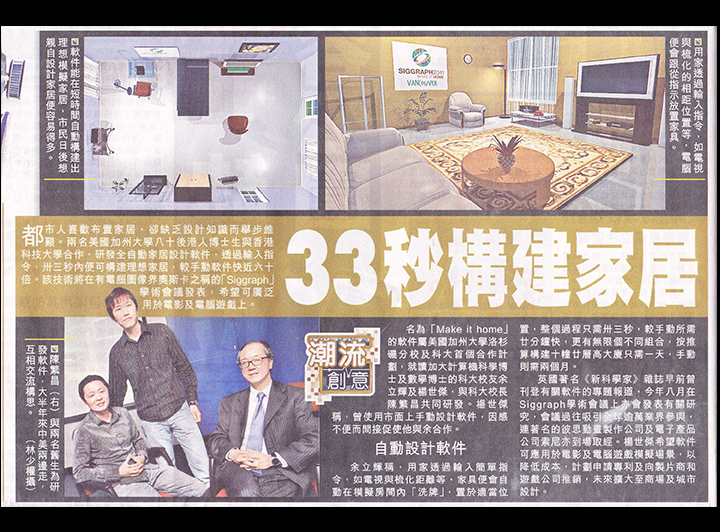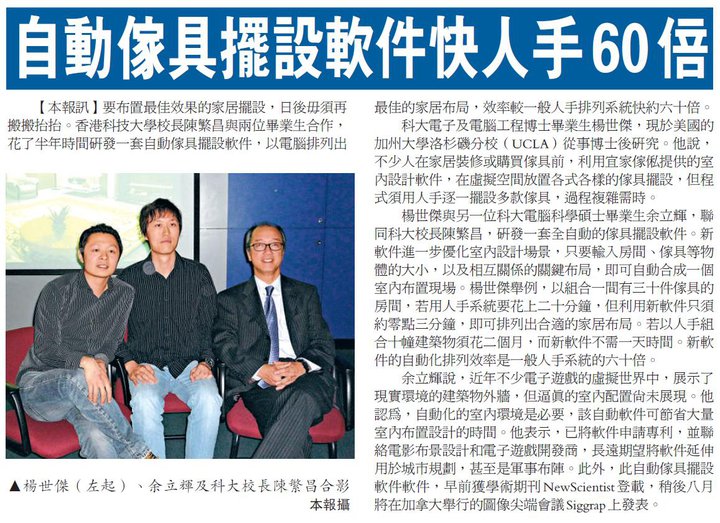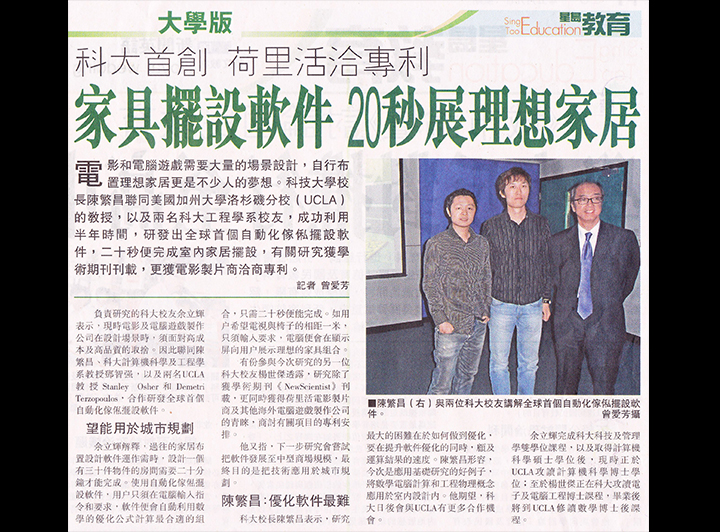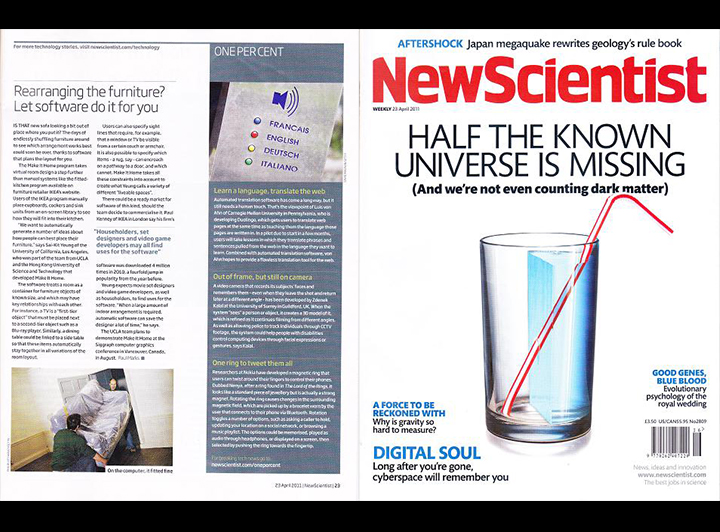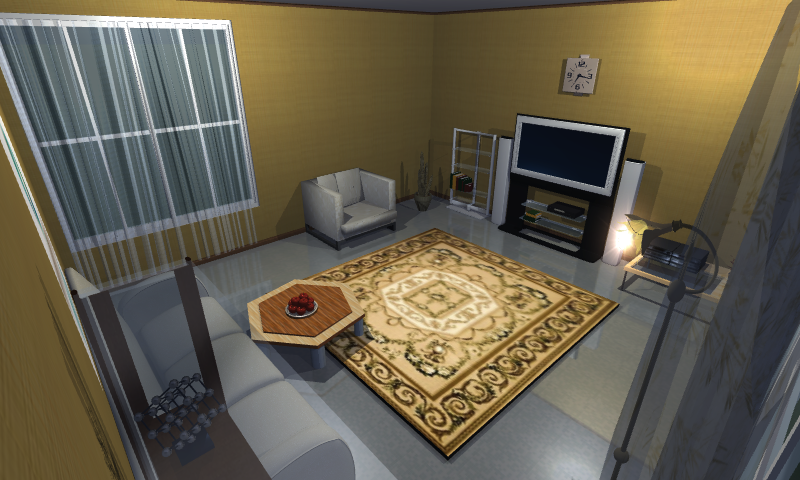authors
 Lai-Fai Yu
Lai-Fai Yu
Assistant Professor of Computer Science
University of Massachusetts Boston
More About Him Sai-Kit Yeung
Sai-Kit Yeung
Assistant Professor of Information Systems Technology and Design (ISTD)
Director of Vision, Graphics and Computational Design (VGD) Group
Singapore University of Technology and Design (SUTD)
More About Him Chi-Keung Tang
Chi-Keung Tang
Professor of Computer Science and Engineering
Hong Kong University of Science and Technology (HKUST)
More About Him Demetri Terzopoulos
Demetri Terzopoulos
Distinguished Professor and Chancellor's Professor of Computer Science
Director, Computer Graphics & Vision Laboratory
University of California, Los Angeles (UCLA)
More About Him Tony F. Chan
Tony F. Chan
President and Professor of Mathematics & Computer Science and Engineering
Hong Kong University of Science and Technology (HKUST)
More About Him Stanley J. Osher
Stanley J. Osher
Professor of Mathematics & Computer Science, Electrical Engineering & Chemical and Biomolecular Engineering
Director of Special Projects, Institute for Pure and Applied Mathematics (IPAM)
University of California, Los Angeles (UCLA)
More About HimAbstract
Publications
Lap-Fai Yu, Sai-Kit Yeung, Chi-Keung Tang, Demetri Terzopoulos, Tony F. Chan and Stanley Osher
ACM Transactions on Graphics (Proceeding of SIGGRAPH 2011)
Fast Forward Slides at Siggraph 2011 (Powerpoint) (21.5 MB), Presentation Slides at Siggraph 2011 (Keynote) (1.58 GB),
Presentation Slides (Powerpoint with no video) (25.7 MB), Powerpoint media files (1.5 GB)
NewScientist, Magazine Issue 2809, 23 April 2011,
BibTex:
@article{craigyu2011furniture,
author = {Lap-Fai Yu and Sai Kit Yeung and Chi-Keung Tang and Demetri Terzopoulos and Tony F. Chan and Stanley Osher},
title = {Make it home: automatic optimization of furniture arrangement},
journal = {ACM Transactions on Graphics},
volume = {30},
year = {2011},
number = {4},
pages = {86}
}
Results
More +While in recent years numerous publications have appeared demonstrating the automatic modeling of building exteriors and facades, the automatic generation of realistic indoor configurations has not yet received the attention that it deserves. With the growing popularity of social virtual worlds and massively-multiplayer online games that feature a large amount of realistic environmental content, automatic methods for optimizing indoor environments are needed, as it would be too tedious and impractical to model every indoor scene manually. Currently, such indoor modeling is usually simplified or even ignored, which severely limits the realism of many virtual environments.
This paper introduces a framework for the automatic generation of furniture layouts, avoiding manual or semi-automated layout approaches, which are impractical in many graphics applications requiring full automation. We believe that our work is the first to comprehensively consider human factors such as accessibility, visibility, pathway constraints, and so forth. We have demonstrated the effectiveness of our approach in generating arrangements for a variety of scenarios. In addition, our results have been deemed by human observers to be perceptually valid in functionality when compared with real arrangements generated by human designers.

